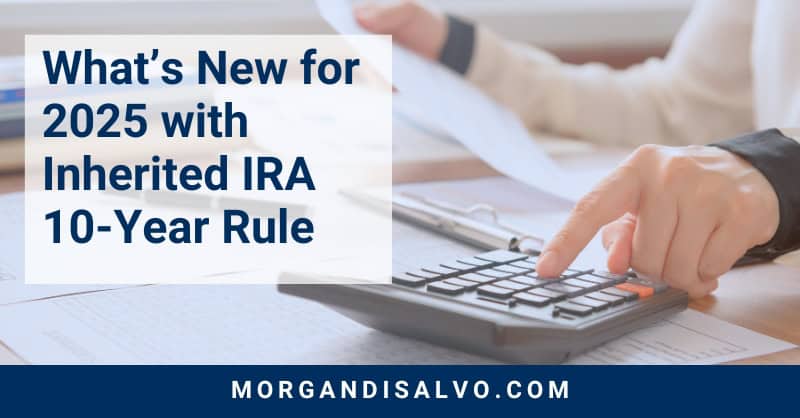Starting in 2025, the Internal Revenue Service (IRS) is ending a grace period it allowed regarding taking mandatory withdrawals – or Required Minimum Distributions (RMDs) – from some inherited Individual Retirement Accounts (IRAs).
Many people are familiar with how RMD rules apply to the original owner of an IRA account. Once the owner reaches age 70-1/2, he or she must begin to withdraw at least a certain minimum amount from IRA accounts each year or penalties will apply.
However, people may not know that RMD rules apply, or be familiar with how they apply, to the account’s beneficiaries.
Who are Eligible Designated Beneficiaries for RMDs?
The owner of an IRA may designate one or more beneficiaries, including persons and entities, to receive assets from the account upon the account owner’s death.
When an IRA account owner dies and the spouse is listed as the beneficiary, the spouse has a number of options, including:
- Rolling the IRA account over into their own IRA, at which point they are treated for all purposes as if they were the original account owner, or
Beginning to take the RMDs based on their own life expectancy, even if they are not yet old enough to have to begin taking RMDs from their own IRAs.
If a non-spouse is the beneficiary of a deceased account owner’s IRA, tax laws and distribution requirements apply and can become complicated. Common non-spouse beneficiaries include adult children, adult grandchildren, and other designated beneficiaries.
Do Inherited IRA Beneficiaries Have to Take RMDs?
The Setting Every Community Up for Retirement Enhancement (SECURE) Act of 2019 and the subsequent SECURE 2.0 Act changed the rules about inherited IRA distributions.
According to the IRS, the factors that affect the distribution requirements for inherited retirement plan accounts and IRAs include:
- Whether the account owner died before or after 2019, and whether the new RMD rules for beneficiaries required by the SECURE Act apply or whether the old rules apply.
- The beneficiary’s relationship to the account owner and specific characteristics, such as being a spouse, minor child, disabled or chronically ill individual, or other entity.
- Whether the original account owner passed away before or after reaching the date he or she was required to begin taking RMDs.
Under pre-SECURE Act rules, payout of the retirement plan assets passing to a designated beneficiary could be stretched out over a period of years equal to the beneficiary’s life expectancy, beginning in the year after the account owner’s death.
After the SECURE Act went into effect on January 1, 2020, full payout of all assets that remain in a retirement plan must be distributed completely to designated beneficiaries no later than December 31 of the calendar year that contains the 10th anniversary of the original account owner’s death (also known as the 10-year cliff rule), except for certain very narrow categories of designated beneficiaries (called “Eligible Designated Beneficiaries”).
What is Changing for 2025 Regarding the 10-Year Rule?
Since the SECURE Act went into effect, the IRS issued annual relief for tax years 2020-2024 for non-spousal inherited IRA beneficiaries by waiving penalties for missed RMDs. However, beginning in 2025 and beyond, this relief will not be available in most cases.
This means that, under the 10-year rule, a designated beneficiary who is not an “Eligible Designated Beneficiary” and who inherited an IRA account in 2020 must withdraw and pay income taxes on the entire account by December 31, 2030. The IRS is encouraging beneficiaries to take their RMDs in a timely manner in order to avoid incurring penalties.
If you’re the beneficiary of an inherited IRA, now is the time to discuss estate and tax planning for your particular situation. Please call the Metro Atlanta-based estate planning attorneys at Morgan & DiSalvo at (678) 720-0750 or e-mail us at info@morgandisalvo.com to schedule a consultation. We can answer your questions and determine what might be the best fit for you in terms of an estate plan that minimizes the effects of taxes on your wealth.


